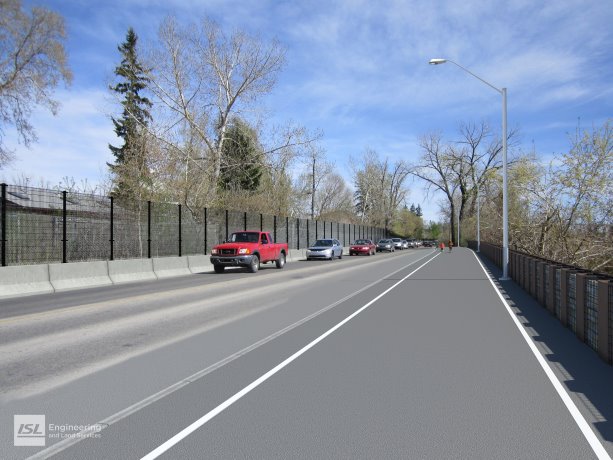The headline-making floods that besieged Calgary and southern Alberta happened nearly three years ago, but the flooding’s impact is still being felt today.
In fact, the City of Calgary has just commenced work on the Zoo Flood Mitigation Project, which is a response to the approximately $50 million in damages its zoo suffered in 2013. (That figure includes costs related to the destruction of zoo buildings and infrastructure, as well as expenses incurred protecting animals and loss of revenue dollars.)
According to the City of Calgary, "recent flood maps show the zoo is at risk of near complete inundation during a 1:20 year event." As such, Calgary’s city council approved funding for the $30-million Zoo Flood Mitigation Project last summer. The project started in early March and has an estimated completion date of late 2017. The prime contractor for the project is PCL Construction Management
Inc.
Project Manager Vivin Thomas says the primary challenge the project team has encountered involves the specifics of the zoo’s geographic locale, as much of the zoo is situated on St. George’s Island in the Bow River.
"We are in an environmentally-sensitive area, an island
surrounded by water…and we’re working within a zoo,
so we have to be sensitive to animal care," says Thomas.
"This is a one-of-a-kind project for Calgary, let alone for Alberta."
The Zoo Flood Mitigation Project was expanded to include a full reconstruction of Zoo Road adjacent to the zoo.
"One option was to either raise the road, or to put the wall on the south side of Zoo Road. We realized that if we moved the wall to the south side of the road, it does everything. On the south side, it will protect the road as well," Thomas explains.
"It didn’t make sense to not protect the road when we are protecting everything else."
As Thomas explains, the water that overran the zoo in 2013 was not only the result of overland flooding but, also, from water percolating up through the ground. As such, pre-fabricated sheet piles will be driven as much as 16-metres underground to form a barrier.
"We want to hit bedrock. This will prevent underground seepage from moving up onto the land surface," Thomas says, adding that sheet piles were chosen instead of concrete secant piles "to mitigate the cost and to make sure the project can be completed on time."
The sheet-piling barrier will extend some 1.8 kilometres around the island. Thomas says using sheet pile to construct the wall also
allows for the possibility of raising it. "We can always weld a sheet-pile extension to the wall," he says. As the soil in proximity to the zoo is hard and gravelly, Thomas says they had to be careful in selecting a type of sheet pile that’s strong enough "so it doesn’t deflect or bend from the surrounding area."
As well, as the Calgary Zoo is one of the city’s top attractions, the visual aesthetics of the flood barrier have to be considered.
"We don’t want a rusted piece of steel sitting there. The river rock we have incorporated into the wall makes it more visually appealing," says Thomas, adding river rock is also one of the most cost-effective decorative options.
The Zoo Flood Mitigation Project includes implementation of a pumping system on zoo grounds in the event of water breaching the barrier.
"Obviously, the sheet piling is not 100 per cent flood proof," Thomas explains, adding there will be eight pumps installed across four quadrants of the Zoo.
According to the City of Calgary, the execution of these flood-mitigation measures will "protect the zoo to one metre above the 2013 flood, which is half of a metre above the 1:100 year flood elevation."
Needless to say, one aspect of this project which makes it particularly unique is the proximity of zoo animals.
"We are closely monitoring our animals to ensure that what’s happening during the construction is not affecting them too much," says the Calgary Zoo’s Larissa Mark, adding that zoo staff will be testing animals prior to, during and after construction to assess their stress levels.
"We don’t anticipate any issues, but this level of construction is something the zoo has never seen before," Mark adds.

1/2
Photo: ISL Engineering and Land Services











Recent Comments
comments for this post are closed